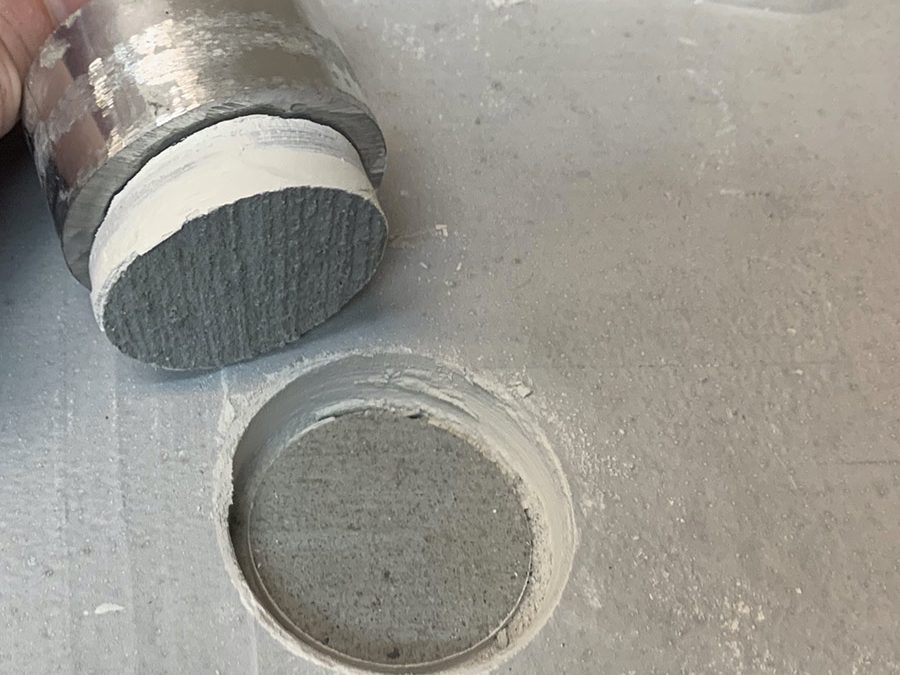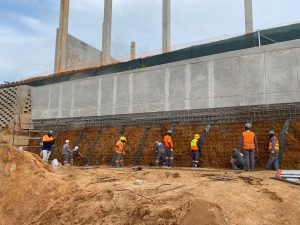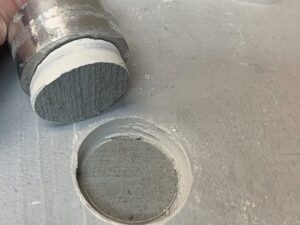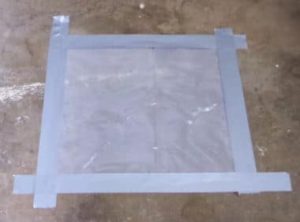By Sheldon White
Colloidal silica post-placement pozzolan technology is not a bond breaker. Colloidal silica post-placement pozzolan technology penetrates concrete and does not change its surface. Because it is not a coating, colloidal silica post-placement technology does not affect bond integrity. Alternatively, a bond breaker is a product that forms varying layers of separation between the contact surfaces.
Colloidal silica post-placement pozzolan
Colloidal silica post-placement pozzolan technology has been tested to prove that it is not a bond breaker. Tests have shown that colloidal silica post-placement pozzolan technology actually increases the pull-off strength of concrete. Pull strength is increased by up to 73% compared to untreated concrete, while the technology also has no statistical effect on surface friction.
Colloidal silica post-placement pozzolan technology was tested using two methods. The first was the ASTM C1583 Standard Test Method for Tensile Strength of Concrete Surfaces and the Bond Strength or Tensile Strength of Concrete Repair and Overlay Materials by Direct Tension (Pull-off Method). The other was the ASTM E303 Standard Test Method for Measuring Surface Frictional Properties Using the British Pendulum Tester.
Formerly known as the American Society for Testing and Materials, ASTM International is a global standards organisation. ASTM develops and publishes voluntary consensus technical standards for a variety of materials, products, systems and services.
Colloidal silica and testing
Using the ASTM C1583 method to test colloidal silica post-placement pozzolan technology, surface contaminants and any loose deteriorated sections were first removed from the sample. It was then prepared to the typical surface conditions of the in-place concrete structure. Colloidal silica post-placement pozzolan technology was then applied to the concrete and allowed to cure. A circular cut perpendicular to the surface was made using a core drill. The colloidal silica post-placement pozzolan technology was left intact on the concrete substrate. A steel disk was then attached to the top of the material using an epoxy adhesive. Following this, a tensile loading device was attached to the steel disk to apply a tensile load to the test sample. Force was applied parallel to the vertical axis of the specimen until failure and the results then recorded.
To test the performance of colloidal silica post-placement pozzolan technology using the ASTM E303 test method, the concrete surface was first cleaned and freed of any loose particles. The instrument was then placed and levelled. A pendulum was then lowered so that the edge of the slider just touched the concrete surface. The entire test area was then covered with water. A reading was not recorded after the first swing of the pendulum. This was only done after four more swings were made and the surface of the concrete sample wet every time.
Colloidal silica and the concrete matrix
Colloidal silica post-placement pozzolan technology become an integral part of the concrete matrix and is not a surface coating. Therefore, additional treatments or removal prior to using a covering or coating are not required. Moreover, preparation to the level of concrete surface profile required by the covering or coating manufacturer can be accomplished without interfering with the performance of colloidal silica post-placement pozzolan technology. Colloidal silica post-placement pozzolan technology can be used with all types of floor coverings and adhesives. This is without it having a negative impact on the flooring material or its adhesion.






